- News
- Reviews
- Bikes
- Accessories
- Accessories - misc
- Computer mounts
- Bags
- Bar ends
- Bike bags & cases
- Bottle cages
- Bottles
- Cameras
- Car racks
- Child seats
- Computers
- Glasses
- GPS units
- Helmets
- Lights - front
- Lights - rear
- Lights - sets
- Locks
- Mirrors
- Mudguards
- Racks
- Pumps & CO2 inflators
- Puncture kits
- Reflectives
- Smart watches
- Stands and racks
- Trailers
- Clothing
- Components
- Bar tape & grips
- Bottom brackets
- Brake & gear cables
- Brake & STI levers
- Brake pads & spares
- Brakes
- Cassettes & freewheels
- Chains
- Chainsets & chainrings
- Derailleurs - front
- Derailleurs - rear
- Forks
- Gear levers & shifters
- Groupsets
- Handlebars & extensions
- Headsets
- Hubs
- Inner tubes
- Pedals
- Quick releases & skewers
- Saddles
- Seatposts
- Stems
- Wheels
- Tyres
- Health, fitness and nutrition
- Tools and workshop
- Miscellaneous
- Buyers Guides
- Features
- Forum
- Recommends
- Podcast
£2,964.00
VERDICT:
A high-end endurance machine when it comes to comfort, handling and performance, but not the price
Excellent ride quality
Clever design details
Massively versatile
Weight:
8,840g
Contact:

This product has been selected to feature in road.cc recommends. That means it's not just scored well, but we think it stands out as special. Go to road.cc recommends
At road.cc every product is thoroughly tested for as long as it takes to get a proper insight into how well it works. Our reviewers are experienced cyclists that we trust to be objective. While we strive to ensure that opinions expressed are backed up by facts, reviews are by their nature an informed opinion, not a definitive verdict. We don't intentionally try to break anything (except locks) but we do try to look for weak points in any design. The overall score is not just an average of the other scores: it reflects both a product's function and value – with value determined by how a product compares with items of similar spec, quality, and price.
What the road.cc scores meanGood scores are more common than bad, because fortunately good products are more common than bad.
- Exceptional
- Excellent
- Very Good
- Good
- Quite good
- Average
- Not so good
- Poor
- Bad
- Appalling
The Fairlight Strael 3.0 is new for 2021 and it takes everything brilliant from its predecessor but includes some updates that not only improve the ride quality but also give the Strael an even smoother, more refined look. I didn't think the Strael 2.0 could be improved on, but Dom and the team at Fairlight have achieved it!
With the amount of praise heaped on the original Strael and the Strael 2.0 from across the industry, if I was running Fairlight's design department I'd be well happy to just sit back and take it easy for a few years. A couple of new paint colours for each season and bosh... job done.
> Buy now Fairlight Strael 3.0 2021 from Fairlight for £2964.00
They've obviously got a slightly stronger work ethic than me, though, which is why this Strael 3.0 has been in development for the last two years.
Ride quality
One of the best things about the Strael is the ride quality, which comes from its use of steel tubing. What really helps is that Dom Thomas, Fairlight's co-founder and head of design, really knows his onions when it comes to getting the most out of the material, working extensively with Reynolds to design a custom drawn tubeset, which takes that ride feel to the next level.
More about the tubing in a minute, but probably one of the biggest changes that Fairlight has made is to the forming and butting of the chainstays. The new shape is designed to work with the forces in all directions.
Stiffness levels are great. Stamp on the pedals and the Strael responds, not quite as sharp as a carbon superbike but not far off. It certainly feels no slouch off the line or when climbing hard.
The comfort levels are absolutely spot on and well balanced too. When you are seated, regardless of pace, the rear end really takes the bumps and vibrations out of the road; the racer becomes a cruiser.
The front end actually has quite a firm ride to it, never harsh, but you definitely know what is going on beneath you. It's a talkative frame and fork, if you know what I mean. There is little in the way of road buzz or chatter, but the feedback levels are great.
Everything you need to know is coming through the frame and fork from the tyres, and it's this level of interaction that allows you to ride the Fairlight as though it's a much more performance-orientated bike than it is.
Slightest inputs from shifting your bodyweight or tweaking the steering, have such an instantaneous and positive feeling on how the bike behaves. It's just so precise, especially considering that the geometry is aimed more at the relaxed, endurance end of the spectrum.
All this adds up to a feeling of the Strael being an extension of you as a rider. Downhill technical sections are just such a blast – the Fairlight flows from bend to bend in such a controlled manner.
It's hard to get over just how much in tune with everything the Strael is. Regardless of the road conditions or the state of the surface, this thing is nailed on, composed and gives massive confidence to you as a rider.
This brings me on to the handling. What an absolute pleasure.
There is a fair bit of neutrality here, which is great for those longer rides or when loaded up with a bit of kit for an audax or some credit card touring.
The Strael never feels a handful, which is one of its greatest virtues. Regardless of your riding skills, it's never going to make you feel out of your depth.
If you're smooth and calm coming down a hill, the Strael will flatter you and guide you to the bottom with the minimum of fuss.
Want to descend like a suicidal manic? It'll let you have a crack at that too.
> 14 expert tricks for better descending — get down safely and quickly
I love descending; I'll often plan whole routes around a favourite downhill, and the steeper, twistier, more challenging the better.
Every time the Strael delivered, backed up by the excellent grip levels of Continental's GP5000 tyres, and I'd arrive at the base of the descent with a massive smile on my face.
To sum up the way this thing rides, it's basically all of your favourite bikes rolled into one.
I don't race anymore, but I still like getting out some days just for a blast. An hour and a half or so in the red, and I could still do that on the Strael.
Its 8.84kg weight (size 54R, Shimano Ultegra build) isn't too shabby for a disc-equipped bike, let alone a steel one, and if you want to get the hammer down you really won't be disappointed.
The club run, a century ride, a sportive, the commute... it covers them all and is just a pleasurable place to be. It'll make a decent lightweight bikepacking rig too.
Strael 3.0 vs Strael 2.0
So, what's new for the Strael 3.0 model?
First of all, I'm going to skip to the most obvious visually, the Anraed 3.0 fork. Fairlight has created a brand-new mould for this fork, with the most significant difference being a new crown design which increases tyre clearance over the old model and a reshaping of the leg profile to give a smoother shape.
The fork will now accept a 37mm tyre without mudguards and 35mm with.
Speaking of mudguards, all of the mounting places are in the standard position, so there shouldn't be too much faffing when it comes to fitting.
The fork also has fully sleeved internal routing for a front dynamo light, adding to the versatility of the Strael.
The biggest thing for me, though, is that the fork is now colour matched to the frame. It's such a small thing but brings a real look of class and refinement to the bike, I reckon.
Speaking of dynamo lights, the frame has been tweaked to accept cabling for a rear light too. The wire enters under the down tube and travels through the frame until it reaches either the end of the drive side or non-drive side chainstay, depending on which side you want to mount the light. Fairlight has designed it at the dropout as it is unlikely to be hidden by bags and the like.
If you were to run a crankset with an axle diameter larger than 24mm (SRAM DUB, Praxis, Hope...) then you can't run the dynamo cable through the BB shell internally. Cleverly, showing just how much thought has gone into this frame, the Strael allows the cable to pop out at the base of the down tube and re-enter the drive side chainstay. This is proper 'attention to detail' stuff.
Tubing-wise, Fairlight has made a couple of changes.
The first is the down tube, which is made from Reynolds 853 and, as I mentioned, is completely custom for Fairlight.
It starts life as a 34.9mm tube but is then ovalised at each end in opposing directions, to become 30 x 40mm. Fairlight says that the 40mm horizontal oval at the BB adds lateral stiffness while the vertical oval at the head tube copes with braking and ground stresses.
For 2021, the main change is to the butting, which, if you haven't come across it before, relates to the wall thicknesses of the tube. On the Strael 2.0 the wall thickness at the ends of the tube was 0.7mm, with 0.5 at the centre. This has been tweaked to 0.75mm at the ends to increase strength, with a drop to 0.45mm in the middle section to keep the weight down.
Underneath the down tube you now get a third set of bottle mounts to increase carrying capacity, a neat addition for you long distance riders out there.
I've already mentioned the chainstays, but I'll go into a little more detail here.
Made from Reynolds 725, the chainstays are 'heavily' formed from a 22.2mm round tube – they have to go through about four forming jigs and processes to achieve the shape.
For tyre clearance, the tubes are manipulated as they leave the bottom bracket which gives a gap of 44mm for a fitted tyre width of 36mm, so probably something with 35mm on the casing, taking into account today's modern rim widths.
The height of the chainstays here also deals with the pedalling forces coming from the rider for stiffness.
Once you are past the tyre, the chainstays are flattened and narrow towards the dropout, allowing for flex to take the edge off rough road surfaces. This is the biggest benefit, I'd say, over the Strael 2.0 – the 3.0 has a more compliant rear end without sacrificing stiffness.
Finally, we come to the Fairlight x Bentley MK II dropouts.
As an ex-CNC programmer, machinist and designer, I don't reckon you can beat the look of a precision-machined piece of aluminium, and this is exactly what the Strael is wearing at the rear end.
On the brake side, the thru-axle housing and calliper mounting point are machined from a single piece of aluminium, while on the drive side the axle housing also incorporates the hanger.
This means that all parts are replaceable whatever the reason, crash damage or a stripped thread.
On the outside of the frame you'll find machined plates which protect the frame when fitting a rack and mudguard.
Frame
As for the rest of the frame, it's business as normal.
The top tube and seat tube are both made from Reynolds 853, and yes, if you read my reviews of the first two versions of the Strael, I still love the profile of that ovalised top tube.
Even more so now, as it has some cool decals. Apparently the design: 'Represents sun exposure in London on 4 specific dates of the year 2020: those dates being the solstice and equinox dates, the extreme points of the sun's movement through the year. Thickness of the stripes is based on temperature.'
I just like the pattern, if I'm honest.
The head tube starts life as a solid chunk of 4130 chromoly steel and is CNC machined into a tube to accept the headset with tight tolerances. It gives the bike a really solid looking front end and nicely blends the chunky look of the carbon fork with the narrower tubes of the frame.
For the seatstays, Fairlight hs kept things slender for added comfort, and while disc braked bikes don't need a bridge between them, Fairlight has added one to allow for the standard fitting of mudguards.
On the larger 61cm frames, Fairlight uses a 16mm diameter seatstay with a 0.7mm wall thickness (14mm, 0.6mm thickness on other frames) for stronger and larger riders. The size of the top tube is also increased.
The overall quality is very high indeed. The welding is clean and neat throughout, plus the paint finish is solid and thick enough to give a real feeling of luxury.
Paint colours are Putty, Deep Orange and Deep Grey.
Frame weight for this model is a claimed 1,922g and the fork is 440g. In real world terms, a frameset built up with all bolts and dropouts but excluding seatclamp and headset is a claimed 2,620g.
Proportional geometry
Fairlight is quite unusual in offering its bikes in differing geometries, giving you a near-customised frame build without the expense.
Each size is available in a regular (R) or tall (T) fit. The one you go for is determined by submitting a fit report, or by taking the measurements from your original bike – which is what I did when I tested the original Strael.
I'm riding the 54R which has a 550mm top tube (effective), 532mm seat tube, and 130mm head tube length. The seat angle is 73.5°, head angle 72.5°. This gives a stack and reach of 551mm and 386mm respectively.
Compare that to the 54T model: a top tube of 545mm, 536mm seat tube and 160mm head tube; angles of 74° for the seat tube and 72.5° at the head; and stack and reach are 579mm and 378mm.
Fairlight reckons that this modelling fits the majority of the population, and technically you are getting a range of 10 sizes, which is impressive.
The 54cm models have a wheelbase within a mm of each other at 998mm and 999mm, with 418mm chainstays, while the fork rake is 45mm over all sizes.
Finishing kit
The model we have here is the mechanical Shimano Ultegra build, with a 50/34-tooth chainset and an 11-34T cassette.
What can I say about Ultegra that I haven't said before? Nothing, really. It's awesome, with absolutely top notch shifting and braking. If you want the full details, you can check out my review here.
For the rest of the kit, Fairlight has gone for FSA: a K-Force Light carbon seatpost paired with an Energy SCR stem and Gossamer handlebar.
You can pick and choose sizes at the time of ordering, and it's some good quality kit, but you can also upgrade if you want to.
The Fabric Scoop Elite Flat saddle is a nice touch, too. Judging by our reviews, it's one that suits many riders, and I certainly found it comfortable for short and long rides.
Wheels and tyres
As standard this build gets a set of Hunt 4 Season disc wheels and they can't really be faulted. I've owned a pair of these, and they'll take plenty of abuse while also being reasonably light. They're good all-rounders, although Fairlight does give you the option of switching to other wheels, including from Hope.
As I mentioned earlier, the Strael comes fitted with 28mm Conti GP5000 tyres. These are some of the best out there – as you can tell from our reviews. They're grippy, fast-rolling and pretty durable too.
Value
The build we have here will set you back £2,964. That's £2,899 for the standard build, with a £65 upgrade for the Hope finishing kit like the seatclamp and headset (available in a range of colours).
Fairlight has actually managed to keep the frameset price the same as the Strael 2.0 at £1,299, but with the increases we've seen on pretty much everything in the cycling world, the full bikes have crept up, though not by much. A Shimano 105 build has gone up £50, Ultegra £100 and Ultegra Di2, £200.
When it comes to comparisons, something like the Mason Resolution is an obvious rival. They share a similar sort of design idea, being fast, very comfortable and capable steel mile-munchers.
Current pricing for the Resolution 2 is £1,595 for the frameset, and £3,345 for an Ultegra hydraulic build using similar finishing kit and the same Hunt wheels.
> 26 of the best steel road bikes and frames to take a look at
Another beautiful steel frameset I had the joy of riding last year was the Condor Fratello Disc Thru-Axle, which is created from triple-butted Columbus tubing.
It has slightly narrower tyre clearances than the Strael (32mm with full mudguards fitted) and doesn't quite have all the additions like the extra bottle mount under the down tube, the machined parts around the dropouts and for the flat mount caliper and the dynamo routing, but if you don't need that then it is a very good choice. A frameset is £1,199.99.
The Enigma Endeavour is another lovely looking steel road/adventure frame that comes equipped with plenty of mounts for mudguards and a rear rack.
It's a bit more gravel focused, probably treading more into Fairlight's Secan model territory because of the tyre clearance being optimised for 32-40mm widths, but I think it is a worthy comparison when looking at the pricing of quality steel frames. A frameset will set you back £1,699.
Conclusion
The Strael is a beautiful bike to ride, just simply stunning. With a lot of bikes you can find yourself riding to get to the next fun bit, but the Fairlight makes it all fun. I never had a dull moment – the whole time I was spinning the pedals I just enjoyed being aboard it.
It's not just the ride that sums this bike up, though, it's the attention to detail – the whole thing has been really well thought out. There is so much going on, and while you may not necessarily want or need all of the mounts and things, it's there if you do.
Verdict
A high-end endurance machine when it comes to comfort, handling and performance, but not the price
road.cc test report
Make and model: Fairlight Strael 3.0
Size tested: 56cm
About the bike
List the components used to build up the bike.
Chainset: Ultegra R8000 50/34T
Cassette: Ultegra HG-800 11-34T
Front Mech: Ultegra R8000
Rear Mech: Ultegra R8000
Shifters/Brake Levers: Ultegra R8020
Brake Calipers: Ultegra R8020
Rotors: SM-RT800 160mm F/R
Wheels: Hunt 4 Season Disc
Tyres: Continental GP5000 28mm
Saddle: Fabric
Seatpost: FSA K-Force Light Carbon
Stem: FSA Energy SCR
Handlebar: FSA Gossamer
Headset: Hope
Seatclamp: Hope
Tell us what the bike is for and who it's aimed at. What do the manufacturers say about it? How does that compare to your own feelings about the bike?
Fairlight says, "The Strael is our 4 seasons road bike. A bike designed with as little compromise as possible; the tube set and handling of a steel race bike with the function, utility and practicality of an audax bike. If riding on tarmac is your thing, then this could be the only bike you need. Fast and efficient with incredible comfort. It descends like its on rails, with tube forming and geometry working together to provide resistance against some forces, while working in harmony with others. We felt it would be difficult to improve on the Strael 2.0, so it's taken two years of development to further push the design forward; requiring new factories, new tooling, new tubing and new process. It's a fantastic product that further pushes forward what is possible with the material, while offering unrivaled functionality and detailing. "
The Strael 3.0 is a quality all-round road bike with an excellent ride feel and attention to detail.
Where does this model sit in the range? Tell us briefly about the cheaper options and the more expensive options
The Strael 3.0 is available in a range of builds including 105, Ultegra and Ultegra Di2.
Frame and fork
Overall rating for frame and fork
10/10
Tell us about the build quality and finish of the frame and fork?
Excellent build quality throughout, with very tidy welding on the frame. The paint has resisted knocks and scuffs over the test period too.
Tell us about the materials used in the frame and fork?
The Strael 3.0 uses custom drawn tubing from Reynolds' 853, 725 and 631 steel ranges. The fork is Fairlight's own mould and is made fully from carbon fibre.
Tell us about the geometry of the frame and fork?
Fairlight offers two different geometries in each size, Tall and Regular. Both are designed for endurance style riding. There are more details in the review, and full geo charts can be found on Fairlight's site.
How was the bike in terms of height and reach? How did it compare to other bikes of the same stated size?
Stack and reach figures differ on whether you ride the Tall or Regular frame. The Regular that I've been riding has a pretty low front end and generous length in the top tube, giving the option of running quite a racy position. It's not any more extreme than many other bikes of this ilk, though.
Riding the bike
Was the bike comfortable to ride? Tell us how you felt about the ride quality.
Very impressive comfort levels from the frame and fork. One of the best examples of balancing stiffness and comfort I've found.
Did the bike feel stiff in the right places? Did any part of the bike feel too stiff or too flexible?
Stiffness is impressive for a steel bike. It coped well with climbing and sprinting.
How did the bike transfer power? Did it feel efficient?
The bike feels efficient thanks to good gear ratio choices and a reasonably light overall weight.
Was there any toe-clip overlap with the front wheel? If so was it a problem?
No.
How would you describe the steering? Was it lively neutral or unresponsive? Lively wihtout being a handful.
Tell us some more about the handling. How did the bike feel overall? Did it do particular things well or badly?
For a non-race bike the Strael has quick and precise steering, which always manages to be fun without becoming a handful.
Which components had the most effect (good or bad) on the bike's comfort? would you recommend any changes?
I got on well with the shape of the Fabric saddle, and it's well padded with good hull flex.
Which components had the most effect (good or bad) on the bike's stiffness? would you recommend any changes?
The Gossamer handlebar offers great levels of stiffness when you get out of the saddle to pedal.
Which components had the most effect (good or bad) on the bike's efficiency? would you recommend any changes?
The 11-34T cassette gives extra gears for climbing.
Rate the bike for efficiency of power transfer:
9/10
Rate the bike for acceleration:
8/10
Rate the bike for sprinting:
8/10
Rate the bike for high speed stability:
10/10
Rate the bike for cruising speed stability:
10/10
Rate the bike for low speed stability:
10/10
Rate the bike for flat cornering:
10/10
Rate the bike for cornering on descents:
10/10
Rate the bike for climbing:
9/10
The drivetrain
Rate the drivetrain for performance:
9/10
Rate the drivetrain for durability:
8/10
Rate the drivetrain for weight:
8/10
Rate the drivetrain for value:
7/10
Tell us some more about the drivetrain. Anything you particularly did or didn't like? Any components which didn't work well together?
It's the usual top quality shifting and braking from Shimano's Ultegra hydro groupset. It really can't be faulted. The addition of the wide-range cassette helps efficiency.
Wheels and tyres
Rate the wheels for performance:
8/10
Rate the wheels for durability:
8/10
Rate the wheels for weight:
8/10
Rate the wheels for comfort:
8/10
Tell us some more about the wheels.Did they work well in the conditions you encountered? Would you change the wheels? If so what for?
The Hunt 4 Season Disc wheelset is a good all-rounder, offering decent performance and durability.
Rate the tyres for performance:
9/10
Rate the tyres for durability:
8/10
Rate the tyres for weight:
8/10
Rate the tyres for comfort:
8/10
Rate the tyres for value:
6/10
Tell us some more about the tyres. Did they work well in the conditions you encountered? Would you change the tyres? If so what for?
Continental's GP5000 tyres are some of my favourites as they work in all conditions and are very fast rolling and grippy.
Controls
Rate the controls for performance:
8/10
Rate the controls for durability:
8/10
Rate the controls for weight:
8/10
Rate the controls for comfort:
8/10
Rate the controls for value:
7/10
Tell us some more about the controls. Any particularly good or bad components? How would the controls work for larger or smaller riders?
Decent spec level for the cost of the overall build. The shallow-drop Gossamer bar allows you to use the drops without too much of an extreme position.
Your summary
Did you enjoy riding the bike? Yes
Would you consider buying the bike? Yes
Would you recommend the bike to a friend? Yes
How does the price compare to that of similar bikes in the market, including ones recently tested on road.cc?
The frameset price is competitive, as I've shown in the review, and as a full build it undercuts the likes of the Mason Resolution by a fair chunk.
Rate the bike overall for performance:
10/10
Rate the bike overall for value:
8/10
Use this box to explain your overall score
I can't fault the Strael 3.0. It delivers everything it should do from the design brief as one of the best four season endurance road machines out there, but it doesn't stop there.
It's a fast bike too, with quick but excellently balanced handling which give many carbon race machines a run for their money.
You really can't argue with the finished quality or attention to detail, especially for the money.
About the tester
Age: 42
I usually ride: This month's test bike My best bike is: B'Twin Ultra CF draped in the latest bling test components
I've been riding for: Over 20 years I ride: Every day I would class myself as: Expert
I regularly do the following types of riding: time trialling, commuting, club rides, sportives, fixed/singlespeed,
As part of the tech team here at F-At Digital, senior product reviewer Stu spends the majority of his time writing in-depth reviews for road.cc, off-road.cc and ebiketips using the knowledge gained from testing over 1,500 pieces of kit (plus 100's of bikes) since starting out as a freelancer back in 2009. After first throwing his leg over a race bike back in 2000, Stu's ridden more than 170,000 miles on road, time-trial, track, and gravel bikes, and while he's put his racing days behind him, he still likes to smash the pedals rather than take things easy. With a background in design and engineering, he has an obsession with how things are developed and manufactured, has a borderline fetish for handbuilt metal frames and finds a rim braked road bike very aesthetically pleasing!
Latest Comments
- ktache 3 hours 28 min ago
The small frame, the aggressive posture, lots of standover height.
- mctrials23 4 hours 24 min ago
As i've said before, the police should be sued for a lot of money when someone they have knowingly ignored has gone on to commit a serious crime....
- David9694 4 hours 31 min ago
'Bad parking' blocks firefighters multiple times on same emergency call-out...
- David9694 4 hours 35 min ago
Cambridgeshire boy, 13, crashes Audi into garden wall after taking it from home...
- Adam Sutton 5 hours 21 min ago
Good stuff. Now do it on cycleway C9 through Hammersmith to Chiswick.
- mark1a 5 hours 30 min ago
It's technically allowed but it's not known as "London's Orbital Car Park" for nothing.
- Dogless 6 hours 38 min ago
You're defending bombing hospitals and refugee camps and starving children.
- mattw 9 hours 18 min ago
Used car salesman is a complete attention-seeking plank....
- tubasti 9 hours 35 min ago
I don't know if they're any better, but they's certainly become more boring.
- FionaJJ 10 hours 1 min ago
At risk of being cynical, and stereotyping the police, it's so they don't have to leave the comfort of their panda cars and pursue on foot when...












































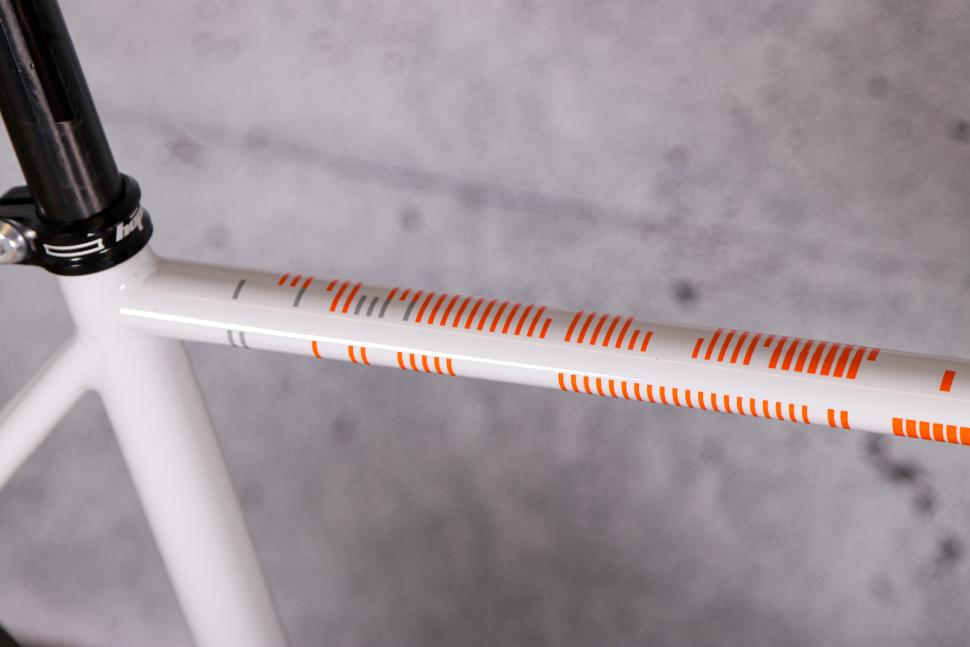
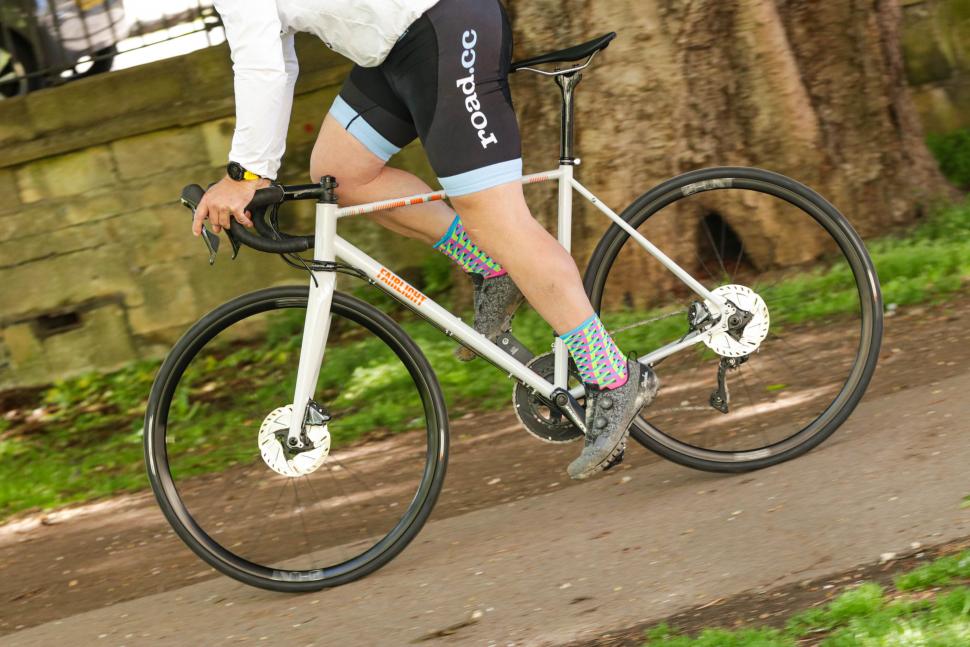
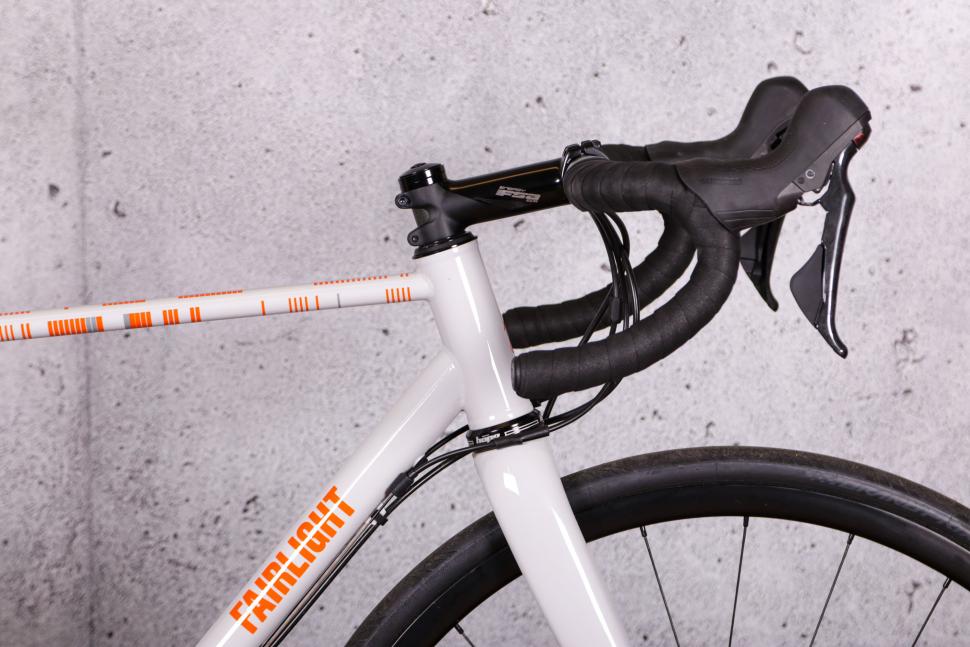
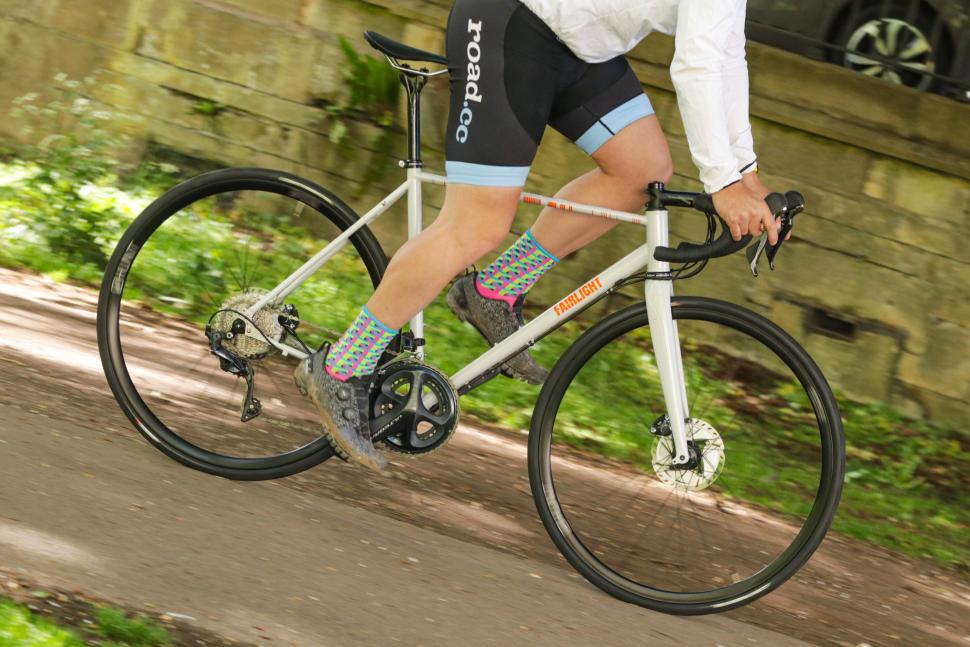


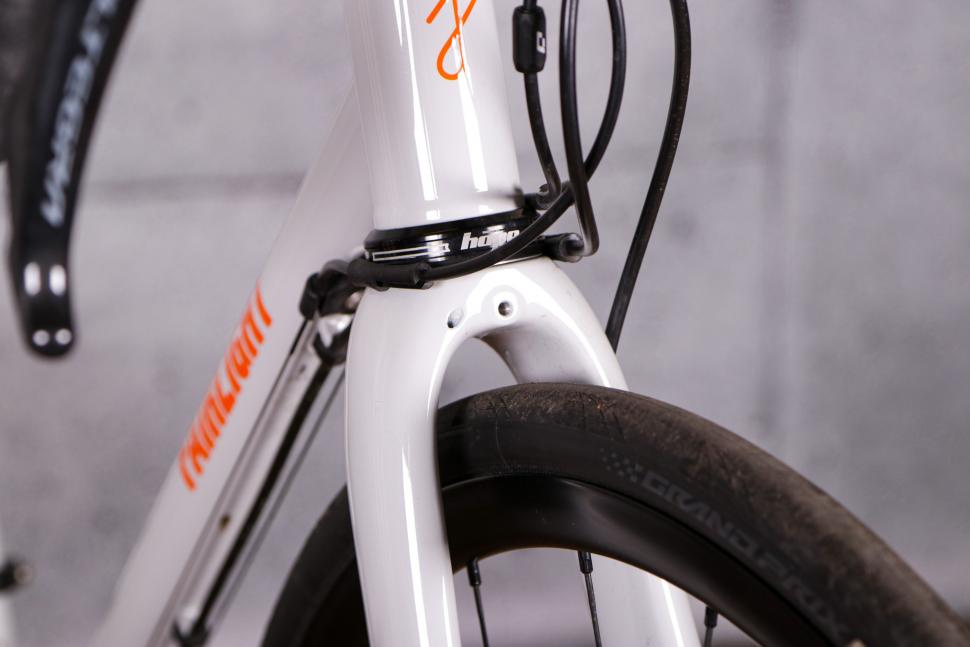



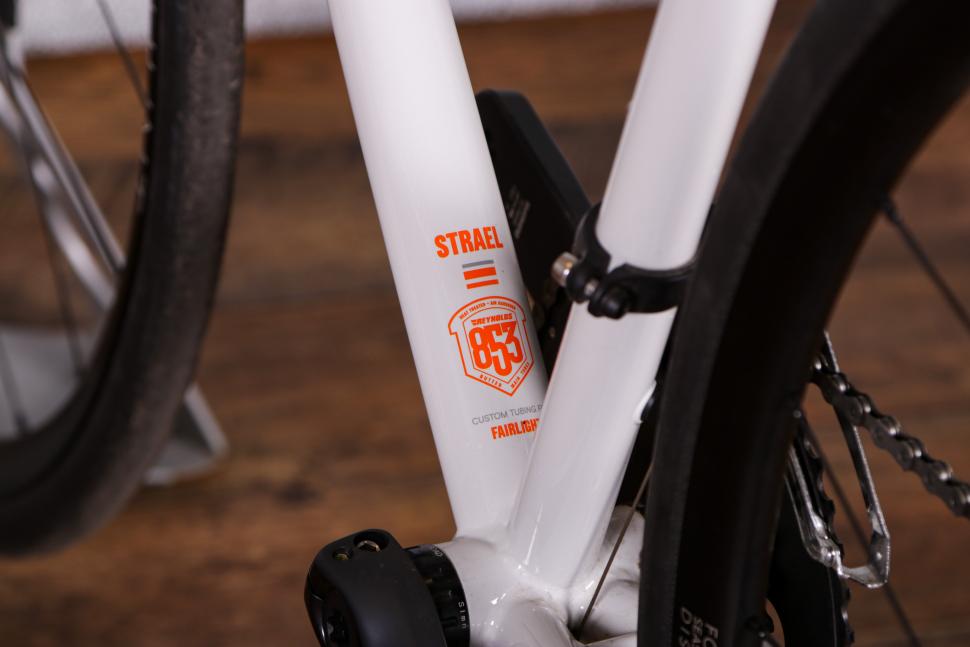
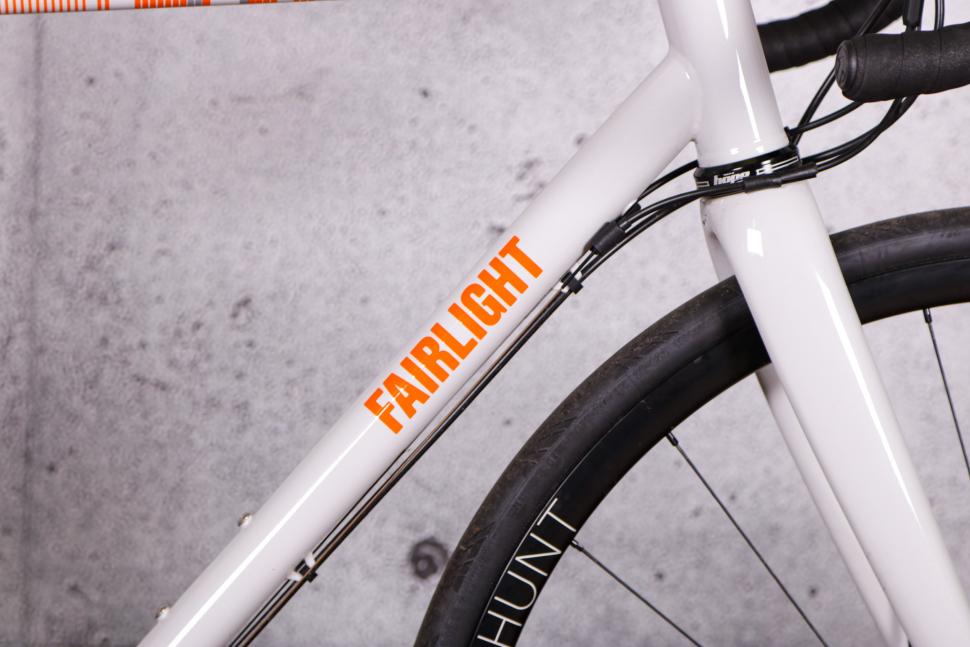



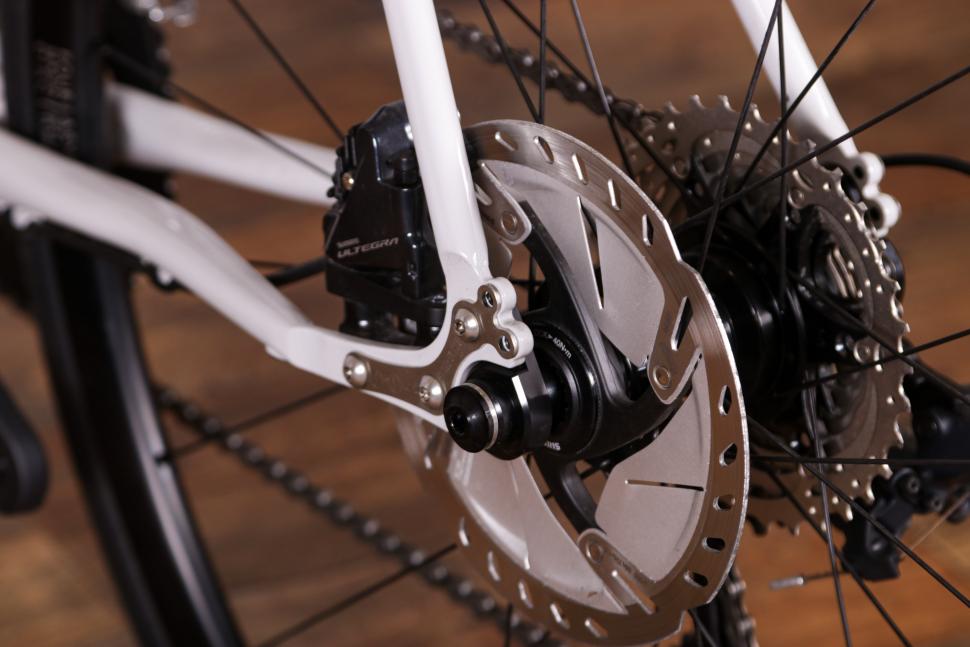
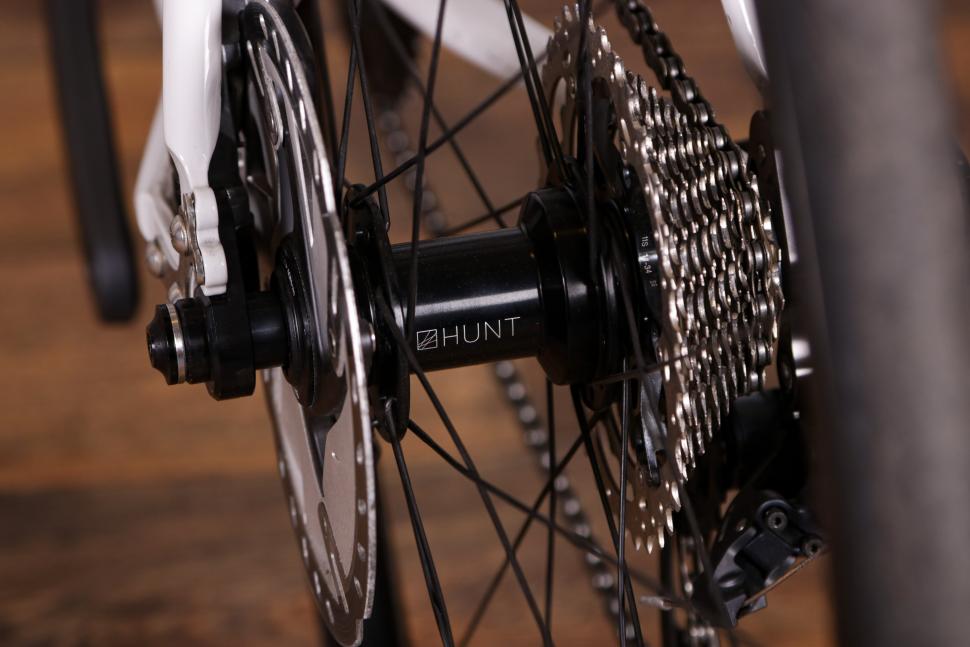
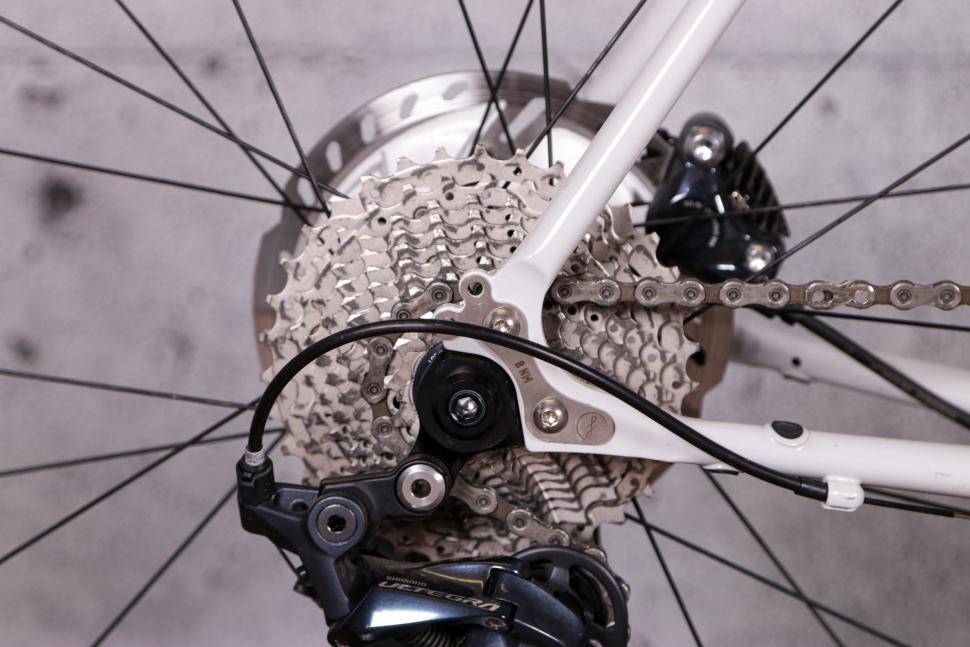

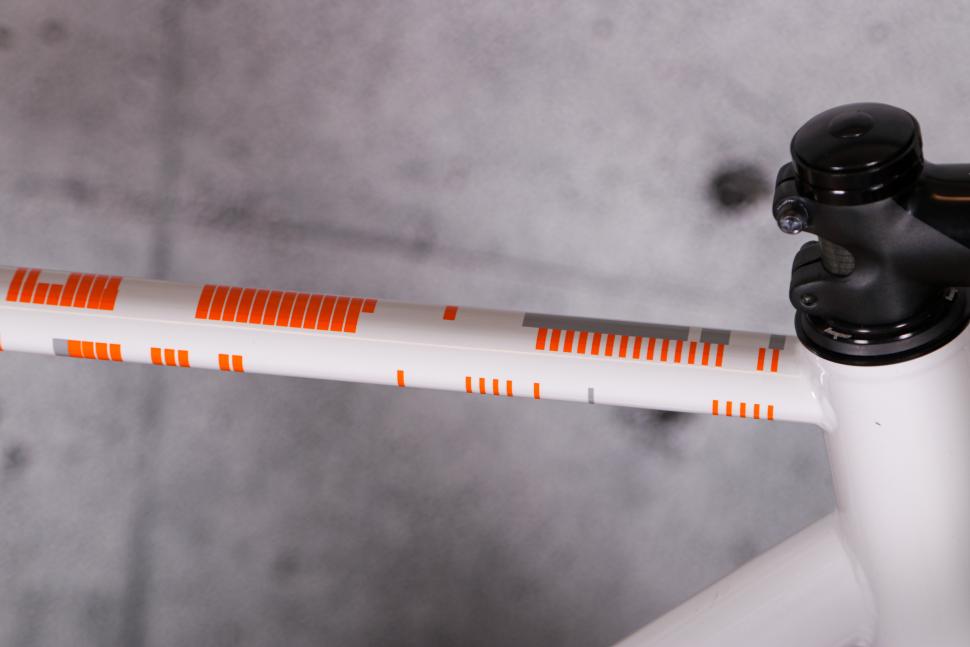
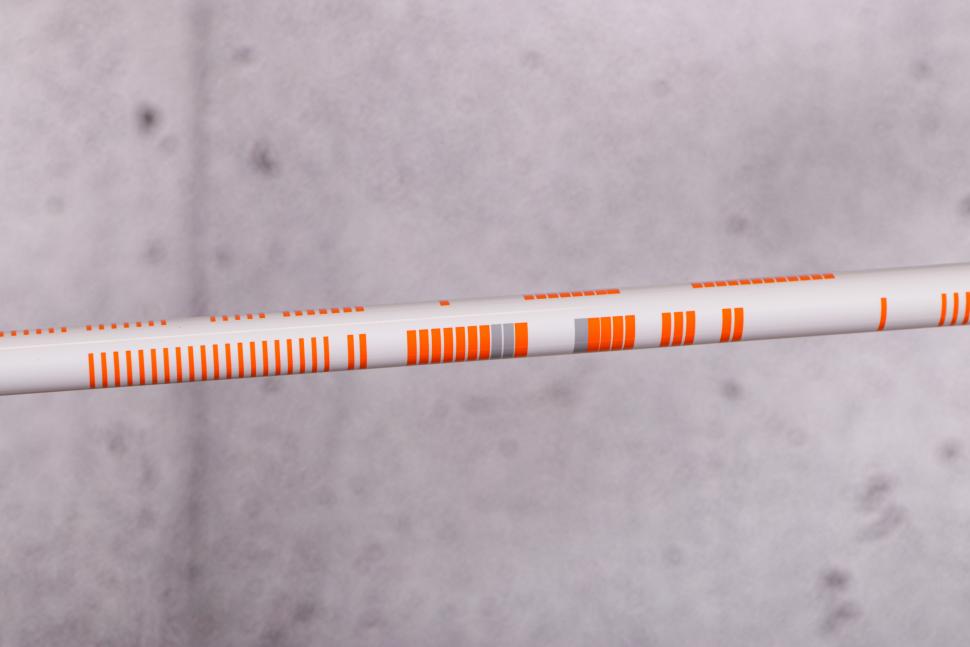

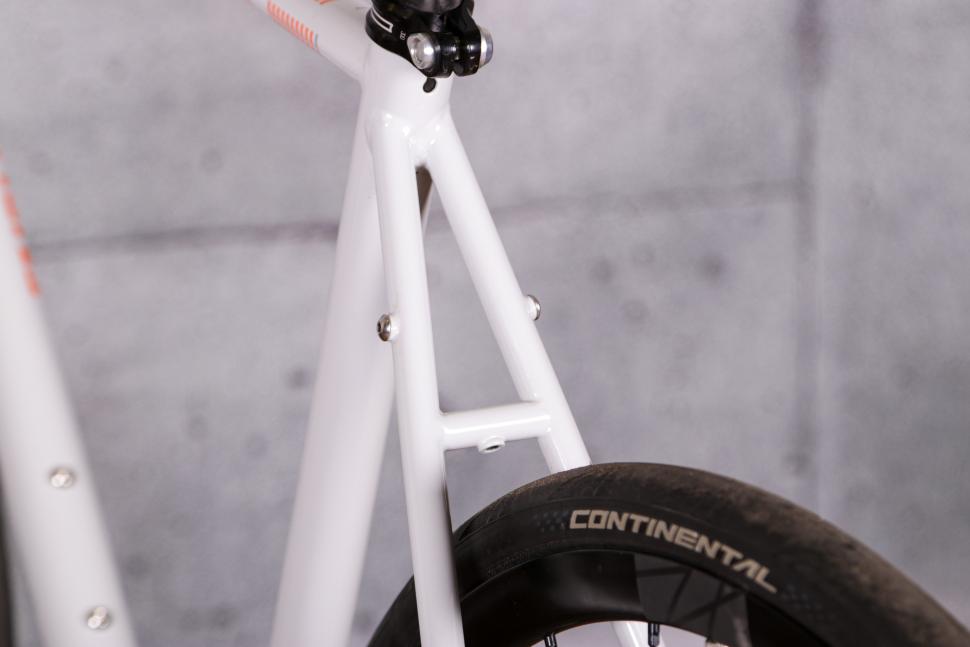



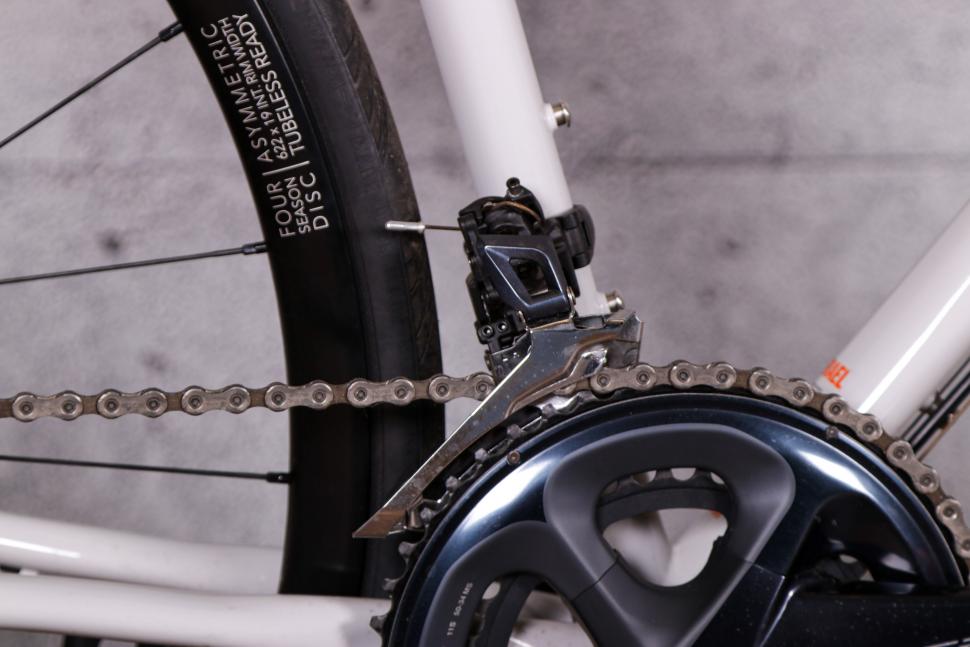
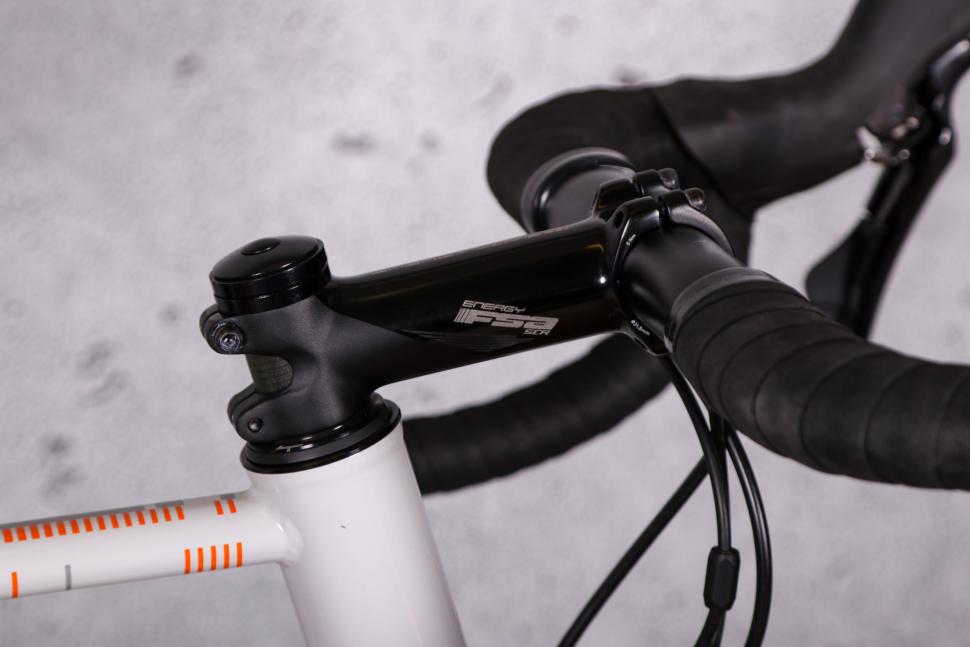
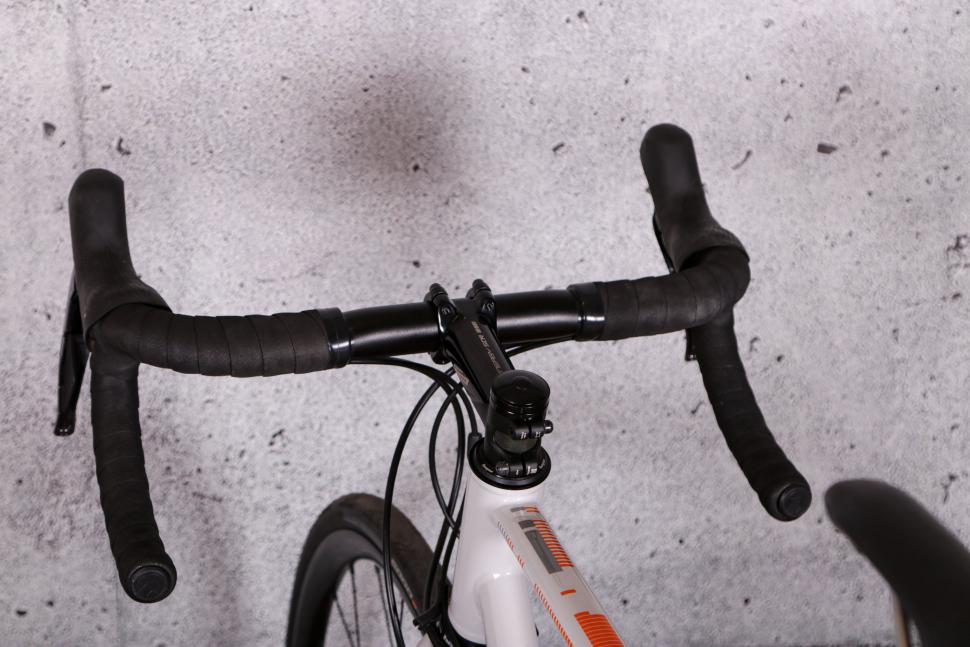

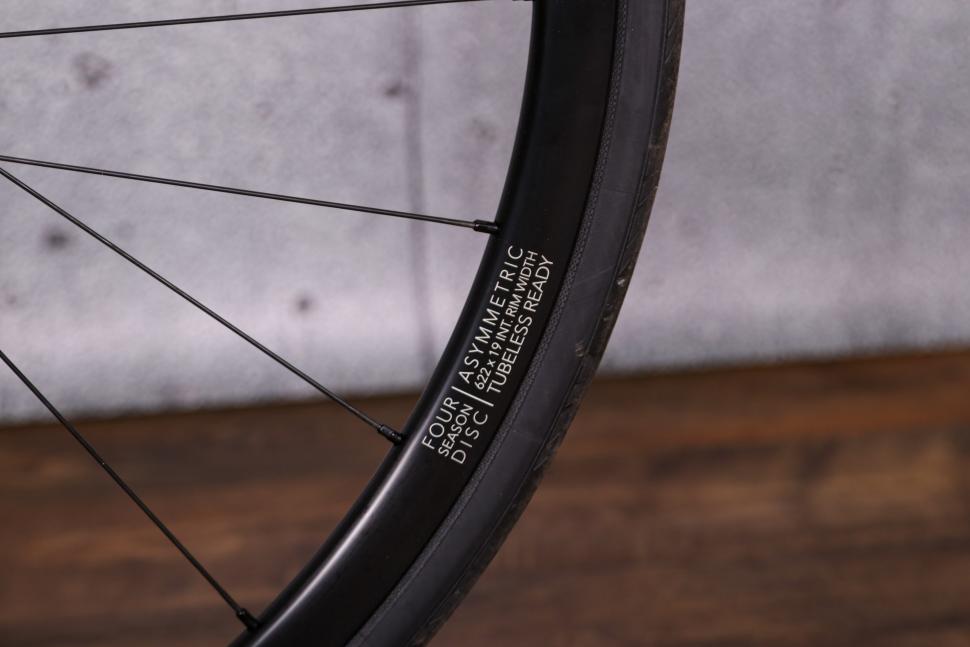
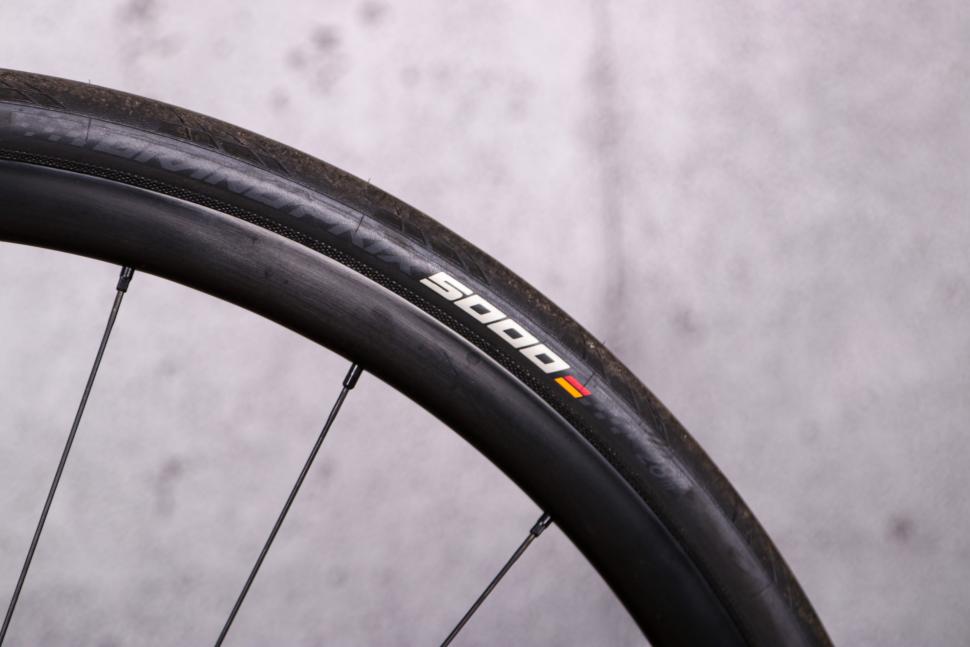
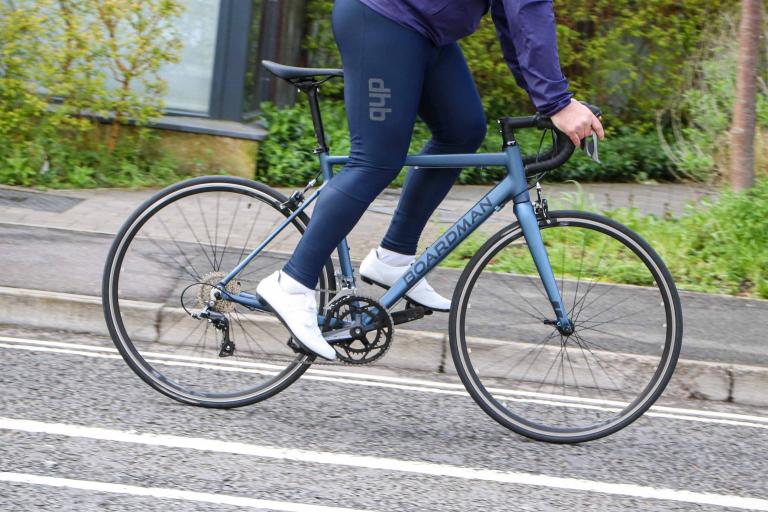
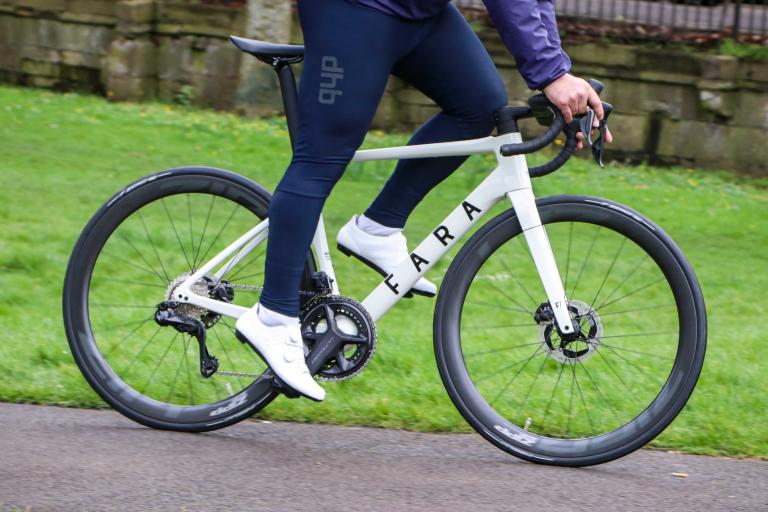
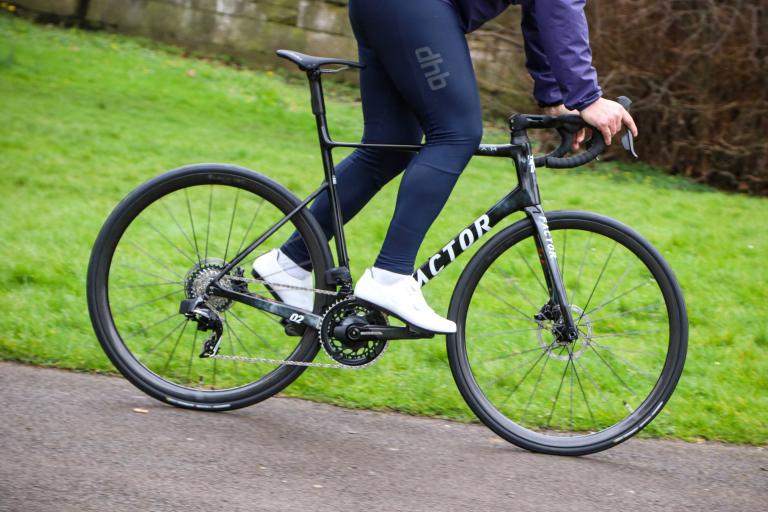
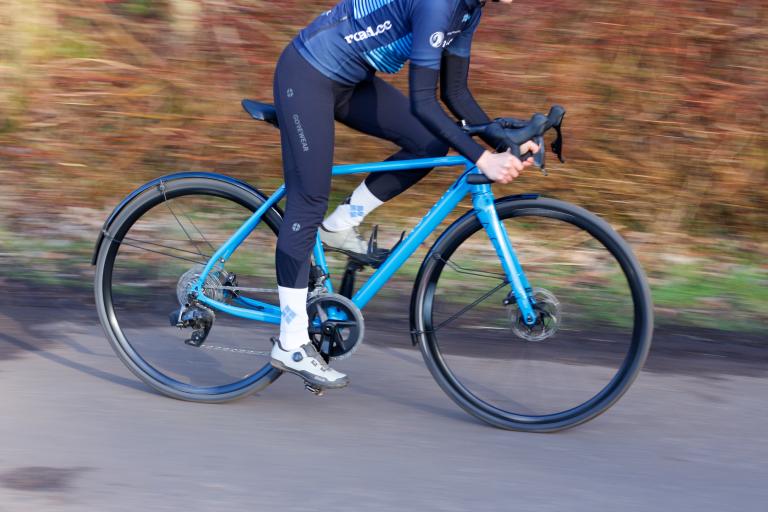
Add new comment
31 comments
"Its 8.84kg weight (size 54R, Shimano Ultegra build) isn't too shabby for a disc-equipped bike."
Err, really? That's definitely the truth being stretched. A lot.
@stu_kerton thanks a lot for the amazing review. How would you compare the strael to the mason definition? Is there one you would prefer?
I've had a Strael 2.0 since early April last year, which I bought as a commuter/tourer. I'm very happy with it, I've done over 6000km on it so far and it's the best bike I've owned. I'm not going to sell it and change to a 3.0 though The gains I don't think will be worth the cost and aggravation of the upgrade. The only thing I've not really liked is the Fabric saddle which I found a bit uncomfortable - I ended up switching it out for the rather well-worn San Marcos saddle that had been on my old bike for 25 years which I found very comfortable (and I did give the Fabric a good run - most of those 6000km were on it, I've only recently switched it out for my old saddle).
The gains I don't think will be worth the cost and aggravation of the upgrade. The only thing I've not really liked is the Fabric saddle which I found a bit uncomfortable - I ended up switching it out for the rather well-worn San Marcos saddle that had been on my old bike for 25 years which I found very comfortable (and I did give the Fabric a good run - most of those 6000km were on it, I've only recently switched it out for my old saddle).
Just have my Strael 3.0 for one week now and been riding it for some longer rides yet. I loved the compliant and responsive ride of my formerly used Ritchey Road Logic, but wanted to switch to a disc brake road bike. This is pretty close to the ride on my Ritchey, with more stiffness in the front, but keeping excellent damping qualities as well. Built it up by myself with a campy, semi-mech disc, the frame is very well made and everything was well prepared.
I do like the fact that they have colour matched forks now it makes the frameset much more of a 'set' so thanks Fairlight. I have to say though I didn't mind about the cable routing before but the more I look at that big black cable running along the down tube bothers me. Is that the rear brake hose? I see what they are doing regarding making it easier for consumers to build their own bikes up but surely though it may be a bit more hassle initally to route the cables internally but once it's done it's done. Even if you have to get your local bike shop to do it wouldn't be that expensive considering how much a full build is going to cost you. (Also gives them some much needed work). Running them on outside means you have to look at it forever just to make it a bit easier in the first place - does that make sense? The thing is this bike could look super clean and minimalist if it didnt have that horrible black hose running all the way along the bike. I also do not think the extra bosses are necessary on this model - they have other frames for that.
Thing is that more complexity with internal routing = more expense, and you are getting really good bang for buck at this level, and also its Ultra Distance heritage means servicing in the boonies needs to be an option.
Personally you don't see the cables when you are riding it so it doesnt bother me, and off the bike it gives a purposeful retro look imo. There is the Mason Resolution if internally routed cables on a steel frame are your thing. Though the rear mech cable routing on the Mason is ... not good imo.
Also bear in mind that the old fashion ways are sometimes the best and I suspect (but cant prove) that External routing is fractionally more mechanically effecient than Internal. Certainly the 105 on my Strael was noticibly more snappy than the same internally routed model 105 on my Carbon bike, and that was with 505 shifters on the Strael vs 685 shifters on the Carbon.
Really? £1,300 for a steel frame and you think that is value for money?
Dolan just released a new Preffisio and the frameset is £299 - now that is a really good bang for your buck. Yes I know they are different materials and one is made in Asia but I am just highlighting the value of it.
Cycling is a complete rip off at the moment (not just frames but more or less everything to do with it). My first road bike steel frame (made in England) was around £250 in the mid 90's - that in 2021 adjusted for inflation is less than £500 - this is £1,300! (I understand as a business that if the demand is there then you might as well sell them for the highest possible amount). If I could go back in time and tell my younger self not to bother with all those years at Uni and be a bike designer/manufacturer instead.
Price =/= value.
And if you think you could do a better job of designing/maunfacturing a bike without any training or experience, then by all means go for it - what's stopping you? I'll look forward to the reading the reviews of your (sub £500) bike when it's released.
Yeah I obviously meant instead of going to Uni I would spend my time and money training to be a bike designer instead. I wouldn't expext to be able to do it without the necc. training.
I am just a bit annoyed (if you hadn't guessed) that the sport I love is such a rip off and there seems to be nothing we can do about it. I mean c'mon a top of the range bicycle is the same price as a car or motorbike? What!
You arent comparing like for like. Go for the Dolan if you want basic rounded 4150 steel or similar. 853/Spirit etc costs more for a reason, more complex production processes, lower manufacturing volumes etc...
You may thinks its a ripoff. I think excellent manufacturing, design and build is worth both the extra base cost and the marketing markup. YMMV.
Or get a Strael 2nd hand like I did.
Yes I know and I did say they are different things I was just using it as an example to show what value for money really was.
Anyway never mind, it's a lovely frame just (in my opinion) too much money (as in all cycling) . I'm gonna Zwift now....
That's more a reflection on how irrelevant the official inflation figures are, plus FX effects. It doesn't help that we've been sacrificing the currency for more than a decade to keep house prices up in the clouds.
I get the external routing for cables but I really can't see a benefit for hydraulic hoses?
I don't think there would be any mechanical benefit - I don't think corners affect hydraulic pressure in the same way as they can affect cables.
However, what effect does drilling holes have on the integrity tubes? I seem to recall the original Strael being touted as the lightest production steel frame in the world. If drilling holes means you need thicker tubes or extra reinforcement, then it might be detrimental to the bike overall. Anything that adds complexity to the manufacturing and assembly process is also only going to drive prices up.
From an aesthetic point of view, I like the 100% clean looks of fully internal routing (including through the handlebar and stem), but if you're just talking about ports in the downtube rather than cables on the outside, then I don't think it makes much difference. You've still got spaghetti junction at the front of the bike where it's most visible and least neat.
Where's the orange headset???
Probably out of stock like most of Hopes stuff at the moment
I'm probably going to be the lone dissenter here but I had a Strael v2 and sold it within months. Personally I found it to be quite high on the BB and it didn't feel as lively, light or as stiff as the 10 year old Condor Fratello or the Bowman Pilgrims it was supposed to replace. It looked amazing, don't get me wrong, but it just didn't have that zing and feedback that my other bikes did.
I've still got the Pilgrims and will probably replace it with a Weald as the geometry, for me, is spot on. It mimics my Colnago within mm. I think that's where the magic really happens with a lot of bikes, get the geometry right and you're halfway there.
Unfortunately the Straels geometry didn't suit me.
I odered a strael 2 last year and due to a variety of issues my frame kept being put back and put back. Eventually I cancelled the order and bought something else.
When I read the reviews of version 3 (which are fully of praise) yesterday I thought to myself; Im having one of those. And then I read your comment. You see I have a Bowman Pilgrim sitting in the garage and I love it. Have had a bike fit which confirmed the Bowman geomerty fits me like a glove. Have owned way to many bikes and I think the pilgrims is ace.
So, from me to you, thanks for the comment as Im going to get a Weald myself as I also love the geomerty.
Chapeau...
I'm seriously eyeing up this versus the Condor Fratello Thru-axle. The pricing seems similar, although this looks slightly lighter. I like Condor providing a free bike fit though.
One thing I'm rather iffy about is that Fairlight recommend a 54R for me (I'm 6 foot), but the top tube length is 566cm, which is more than my Canyon at 555cm. My vintage racer is a 54, but then the geometry is totally different. The 54R is 555cm, so that may be a better fit. Any owners that can comment on the sizing? Many thanks.
I wish it came in red or racing green, but the putty looks good, especially now with the coloured front fork.
I'm struggling to match what you've said to the geometry tables. Did you mean you've been recommended 56R (top-tube of 566mm), while 54R has a top-tube of 550mm?
It's a shame Fairlight don't offer fitting any more (I believe they used to), but you could drop them an email to chat about it if that would help. Do you have any fitting data from your current bike(s)? Would you want to change anything? You can also use the "Measure bike" option on Fairlight's website if you want to directly transpose an existing bike's measurements.
I have the Secan in 56R and I'm a touch shorter than you (5'10"). Although the geometry is not exactly the same, they are pretty close. I'm quite happy with the fit for sporty riding (part of me wonders if I should have gone 54T for more leisurely riding), but on a Strael and given you're taller than me to begin with I think 56R sounds about right.
Thanks, that's really helpful. Yes, I meant mm. I'm content with a lower stack (my Claud Butler is ridiculously low - feels like an 80s sports car), but don't like to overstretch.
I'm tempted to finally have a proper bike fit - Condor do one for £150 if not buying a bike. It seems like I might as well go for the Condor instead though if I do that and the availability of stock is going to be similar. I really wish I could try a Strael out - looks a lovely bike.
You can see the difference here: https://geometrygeeks.bike/compare/canyon-endurance-cf-sl-disc-8-0-2018-...
The 54R looks closely comparable, but sometjhing of a gamble on a £3k bike!
I think it depends on your body dynamics as well as your measurements. I remember being surprised when I submitted my fit measurements to Dom for my Faran and he came back with what I thought was a size too small. As it was I ignored the advice because I needed the frame asap and the colour/size wasn't available. I'm 5'11" and ended up running an 80mm stem and a zero offset seatpost, which points to Fairlight being on the money re sizing. Even with the 80mm stem the bike felt loooong (admittedly, I do have relatively short arms and legs for my height (30" inseam)
Given the investment I'd get a fit done, or measure up the bike you currently have for stack and reach and send Fairlight those.
There's got to be something about these bikes - they all get perfect scores in pretty much every review I've seen.
A v2 was supposed to turn up for me end of this month but Fairlight have changed this to the v3 once the shipment arrives. I'm very much looking forward to it!
I DO think there's a UK factor here. Tiny bit of favouritism. I can't see how you can give a bike a 10/10 with that cable routing. It looks horrific in my opinion. Easy to service, but suffers on the aesthetic. It's 2021, that routing worked well in the 1980's. Nice bike otherwise though.
Agree, the cable routing is the only thing that lets this down aesthetically for me. But it's always a compromise. The down tube cable stops do a good job of siting them alongside the lower cup and keeping everything tight but it's still going to rub.
Like most things it's a conscious design decision I'd imagine - along with mudguard lugs in the right place and the use of a BSA threaded BB. These bikes sell to enthusiasts, who might build them up themselves, and do their own servicing. That routing is a big tick in the box - certainly is for me as it's a must have on any frame I buy.
There is still the option for Di2 internal routing, or just go wireless....
I've got external routing for the brake hose on my Gravel bike (Ribble CGR 725) and it was one of the only things I didn't like about it, this lasted for about 1 week, and then I forgot about it. Yes the black hose on the "white" frame makes it more obvious, I guess if it's that big an issue you could probably get a white or even orange hose so that it's less obvious or more of a feature, but to be honest I don't think it's an issue, it's not like you've got an integrated handlebar setup etc.
I've got external routing for the brake hose on my Gravel bike (Ribble CGR 725) and it was one of the only things I didn't like about it
External routing with a single length of outer on 4 out of 4 cables on my gravel bike was one of the things I especially liked about it. 20 months on it looks like I was right-they're all still running well. After a year I thought there was a problem with the rear derailleur cable, but this soon resolved with withdrawal of the inner and some 'wet' oil dribbled along its length. Some nasty grey coating was coming off the inner, but it's been fine since. External routing rules! (except for those who dislike the appearance, or believe internal routing improves aerodynamics)
You want a US opinion, read a US site. The Strael is the archtypal old-school 'fast tourer' or Audax bike.
That's a European thing, BTW, not UK
I think sammutd88's point was just that maybe a small part of the ongoing good reviews for Fairlight bikes (like Mason) is because they are a UK brand and people like to support UK brands. Of course, it might instead / also be that these UK brands are designing bikes well suited to UK roads and conditions, which therefore review well here.
Correct. No need for the anger and irrational rubbish.
Pages